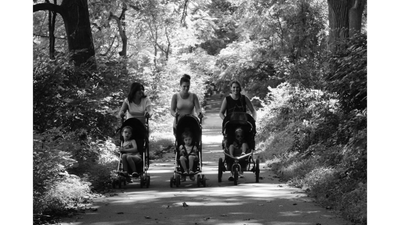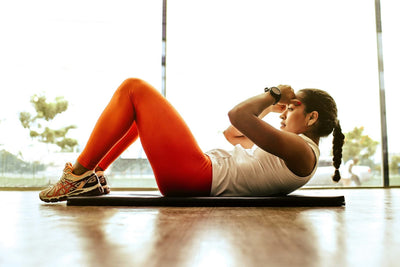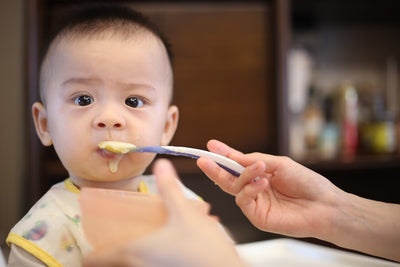Are Breast Changes from Breastfeeding a Myth (Including Implants)?
Are Breast Changes from Breastfeeding a Myth (Including Implants)?
By Katie Black
Understandably, a lot of women fear their breasts will change from breastfeeding. It’s actually a pretty common reason women choose not to breastfeed.
This 2008 study is often used as evidence that breast ptosis (sagging) from breastfeeding is just a myth. Most sources will tell you it’s actually pregnancy and other factors that cause breasts to change in shape, size, or elasticity, while breastfeeding doesn't have an impact.
But despite the many articles clarifying that pregnancy is to blame for changes in breast appearance, the belief that nursing causes sagging is still very much around. And it has a real effect on breastfeeding rates.
Pregnancy and breastfeeding can create complicated feelings about your body, and it’s ok to be worried about it while weighing the benefits of breastfeeding. So let’s clear up any confusion and look at what we currently know.
The studies
The 2008 study, “The Effect of Breastfeeding on Breast Aesthetics” from the Aesthetic Surgery Journal included 93 moms, comparing those who breastfed in the past with those who’d never. They left out anyone who had a history of losing more than 50 pounds for reasons unrelated to pregnancy.
The researchers looked at factors like age, number of pregnancies, history and duration of breastfeeding (averaging about 9 months), BMI, pre-pregnancy bra cup size, smoking history, and weight gain during pregnancy.
The moms reported their bra sizes before their first pregnancy and their current sizes. 51% of them described their breasts as “droopy,” “saggy,” or “less full” after pregnancy. In contrast, 46% saw no change in size, while 37% felt their breasts became smaller and 16% thought they became larger.
Researchers didn’t find a connection between breastfeeding history and increased breast ptosis. But they did find that age and smoking, which affect skin elasticity, contribute to more ptosis, larger pre-pregnancy bra sizes, and more pregnancies. While breast ptosis seems to go up with each pregnancy, breastfeeding doesn’t make it worse.
Specifically,
- Age had a significant positive association, showing a 14% increase in odds for each year of age.
- Number of pregnancies also had a significant association, with an odds ratio of 3.01, meaning there was a threefold increase in odds with each additional pregnancy.
- BMI showed a significant positive relationship with an odds ratio of 1.31, indicating a 31% increase in odds for each unit increase in BMI.
- Smoking history had a very strong association, with an odds ratio of 40.9, suggesting a substantial increase in odds for those with a smoking history.
- Weight gained during pregnancy was not significantly associated, with an odds ratio of 0.61, implying a slight decrease in odds with each unit increase in weight gained.
- Pre-pregnancy cup size showed a strong positive association with an odds ratio of 30.4, indicating a significant increase in odds with larger pre-pregnancy sizes
- Breastfeeding history showed no significant association, with an odds ratio of 1.03.
- Total duration of breastfeeding was not significantly associated, with an odds ratio of 0.94.
The study had its limits, like how it was only made up of women having consultations for cosmetic breast surgery and it doesn't represent the general population. It also wasn’t a very large sample size, but the results back up what pediatricians and lactation specialists have been saying: there’s no evidence breastfeeding harms breast shape.
Implants
This 2013 study looked specifically at whether having breast implants while breastfeeding can change breasts’ measurements or shape.
The researchers compared two groups of moms: one who didn't breastfeed (62 women) and one who did (57 women). Everyone had breast implants prior to giving birth.
They measured things like the distance from the collarbone to the nipple and from the nipple to the bottom of the breast. They also checked how much breast sagging was happening. Measurements were taken before pregnancy and a year after pregnancy for the non-breastfeeding group or a year after finishing breastfeeding for the breastfeeding group. They also collected basic info like age, body mass index, bra size, and how long the women breastfed.
There were no significant differences in breast measurements or sagging between the breastfeeding and non-breastfeeding groups. Overall, both groups experienced some increase in breast size and sagging due to pregnancy.
Other things to consider
Another factor to think about is your hormones. Postpartum hormones are very different from your pregnancy ones. Estrogen drops after giving birth, which can affect the collagen, hydration, and elastin in your skin. Breastfeeding can prolong this dip, so there’s a possibility it plays a role in breast appearance, but it hasn’t been put in numbers. More likely it plays a small role, with pregnancy, genetics, and lifestyle being the main players in breast change.
Also, if you’re not consuming enough nutrients, this can have an effect on your skin. Breastfeeding takes a lot of your body’s resources, so make sure you’re replenishing them with a balanced diet full of veggies, protein, and healthy carbs. And make sure to drink lots and lots of water!
While it’s pretty safe to assume breastfeeding isn’t going to change the shape of your breasts, there’s no guarantee pregnancy, or other factors won’t. It may seem like nursing is what causes them to stretch, but there’s probably another culprit. If you or women you know have always breastfed after giving birth, you don’t know if your breasts still would’ve changed had you skipped breastfeeding completely.
Exercise, dermatologist recommended skincare (never forget sunscreen!), diet, and hydration will be your best bet for the healthiest breast tissue and skin you can have both pre and postpartum.
Sources:
https://academic.oup.com/asj/article/28/5/534/202938?login=false
https://pubmed.ncbi.nlm.nih.gov/32816256/






